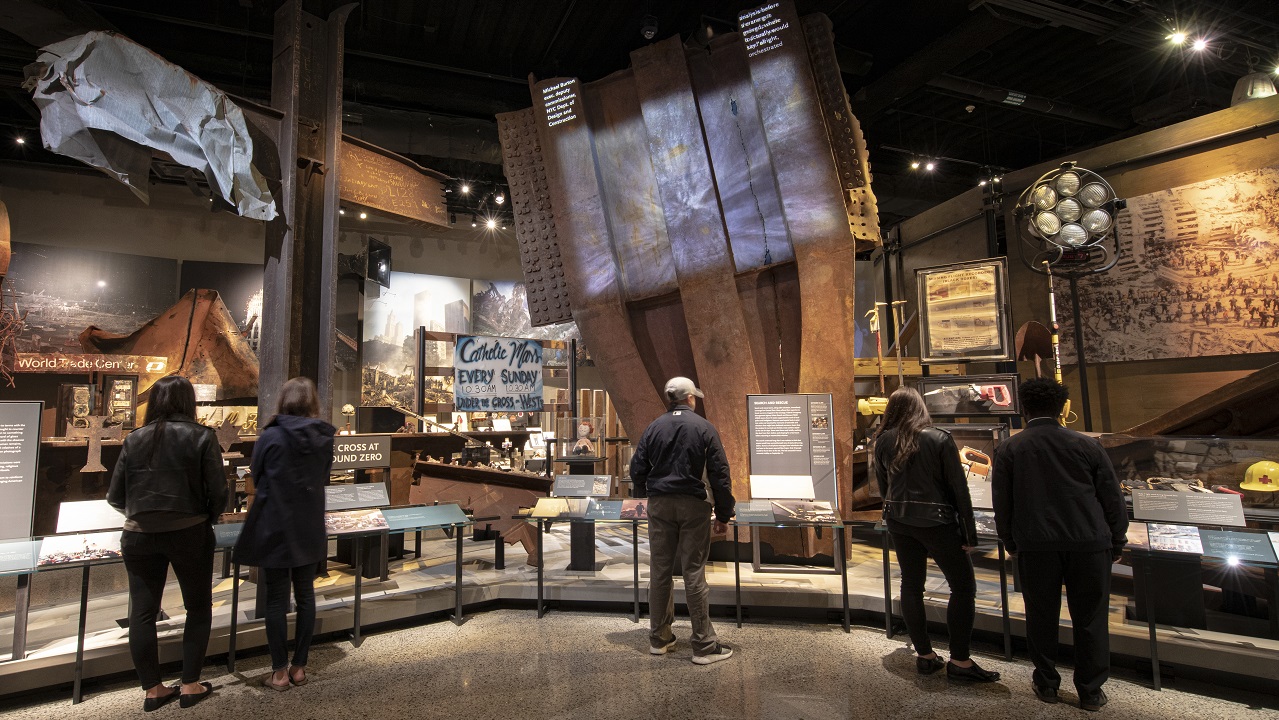September 11, 2001
The historical exhibition tells the story of 9/11 using artifacts, images, first-person testimony, and archival audio and video recordings.

About the Exhibition
The exhibition is divided into three parts. The first part covers the events of the day as they unfolded. The second section provides historical context leading up to the attacks, including the 1993 World Trade Center bombing and other precursors to 9/11. The third and final area addresses the world after 9/11, covering the immediate aftermath of the attacks through the end of the recovery at the three attack sites, and exploring the ongoing ramifications of 9/11.
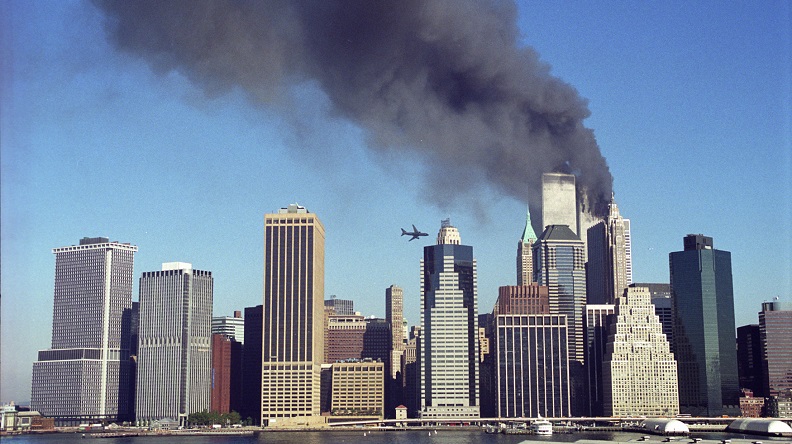
Part 1: Events of the Day
On the morning of September 11, 2001, nineteen terrorists who were members of the Islamist extremist network al-Qaeda hijacked four commercial airplanes shortly after their departures from three U.S. cities. In a coordinated attack, the hijackers intentionally flew two of the planes into the Twin Towers of the World Trade Center, and another into the Pentagon. Learning about the other hijackings, passengers and crew members on the fourth plane launched a counterattack, spurring the hijacker pilot to crash the plane into a field in Pennsylvania. Nearly 3,000 people were killed on that day, the single largest loss of life resulting from a foreign attack on American soil.
The attacks on the World Trade Center triggered the largest rescue operation in the history of New York City. Approximately 2,000 police officers and nearly 1,000 firefighters deployed in response to the attacks on the World Trade Center. More than 100 city and volunteer ambulances were dispatched to the scene within the first hour. As the situation at the World Trade Center escalated, civilians with training in first aid, crisis counseling, law enforcement, and firefighting made their way to the scene of the disaster. Many responders put their own lives at risk to help and save others.
Objects on View
Throughout the exhibition, artifacts serve as historical markers and entry points into the story. Learn more about the objects featured in the historical exhibition below.
Case belonging to Flight 93 passenger Toshiya Kuge
Courtesy of Yachiyo Kuge and Naoya Kuge
College sophomore Toshiya Kuge was heading home to Japan after vacationing for two weeks in the United States and Canada. Boarding Flight 93 for the first leg of his return journey, he carried his passport in a case that he and his mother had picked out.
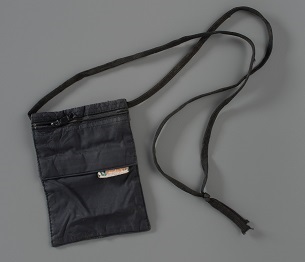
Bandana belonging to Welles Remy Crowther
Collection 9/11 Memorial Museum, Gift of Alison and Jefferson Crowther and family
Welles Crowther, a 24-year-old equities trader for Sandler O’Neill & Partners, worked on the 104th floor of the South Tower. Wearing a red bandana over his mouth and nose to guard against smoke, Crowther drew on his training as a volunteer firefighter and guided survivors to the single viable stairwell.

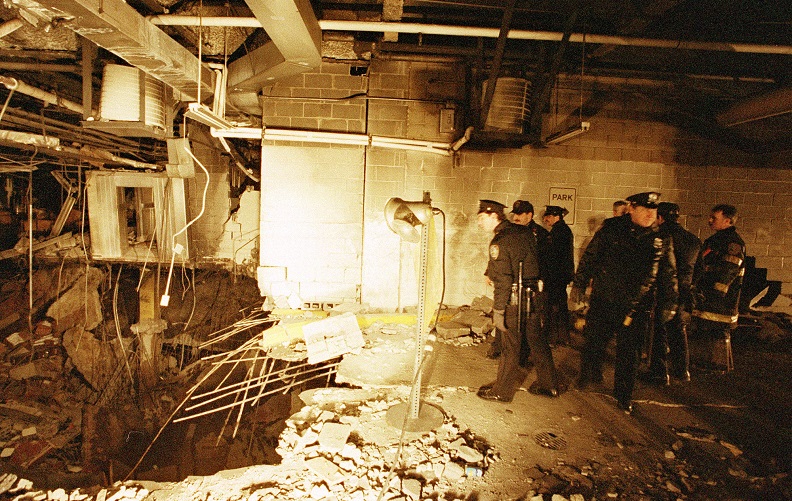
Part 2: Before 9/11
9/11 was not the first attack on the World Trade Center. On February 26, 1993, terrorists detonated a bomb in a rented van parked in the World Trade Center’s underground parking garage. The bomb killed six people and injured more than 1,000.
Though carried out by different groups of extremists, the attacks of 1993 and 2001 both occurred within the broader context of an emerging radical Islamist ideology. Al-Qaeda, the Islamist fringe group that perpetrated the 9/11 attacks, wished to attack symbols of American military, political, and economic power using hijacked American airplanes.
Leaders of al-Qaeda selected the hijackers who carried out the 9/11 attacks from a pool of young men who attended terrorist training camps in Afghanistan. By June 2001, all 19 hijackers had arrived in the United States.
In the early morning hours of September 11, the hijackers boarded four flights and began their assault.
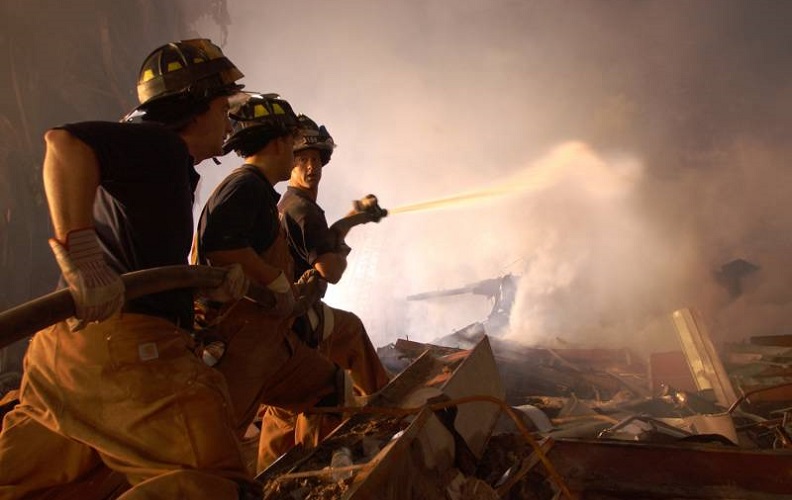
Firefighters extinguishing fires in the rubble of the World Trade Center, September 19, 2001.
Part 3: After 9/11
The story of the days, weeks, and months following the devastation of 9/11 is epitomized by acts of compassion, public service, and volunteerism that significantly contributed to the rescue, recovery, and cleanup efforts.
At Ground Zero, the scene of mass destruction at the World Trade Center site, the search for survivors began immediately. In less than a week, thousands of rescue personnel, investigators, engineers, laborers, and volunteers had arrived to join the effort. Over the next nine months, recovery workers cleared approximately 1.8 million tons of debris.
In late May 2002, with the ceremonial removal of the Last Column, the major work of cleanup and recovery at the World Trade Center site officially ended. Though grief was undiminished, the country faced forward. The legacy of the 9/11 attacks would continue to define policy debates, civic discourse, and reflections on public safely, global politics, civil liberties, and finding the right balance between remembering and rebuilding.
